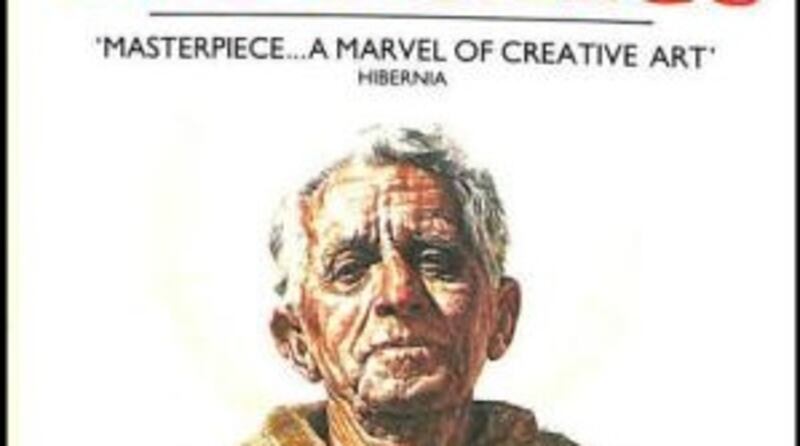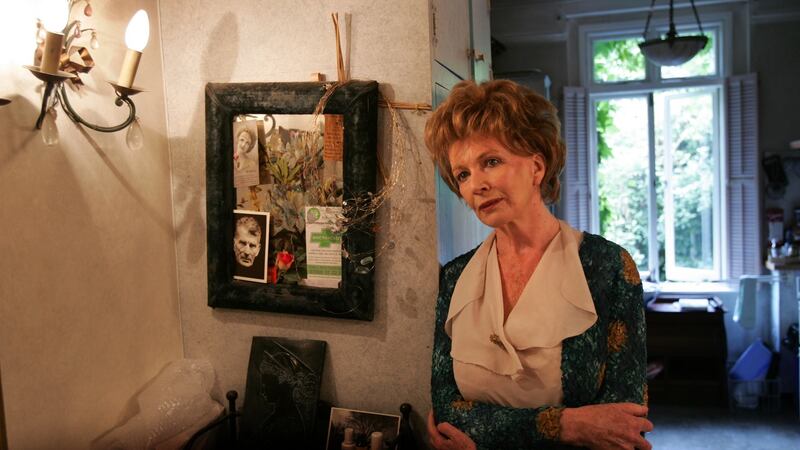In Underground Cathedrals (2010), the Glenstal monk and author Mark Patrick Hederman described artists as the "secret agents" of the Holy Spirit: "Art has the imagination to sketch out the possible. When this happens something entirely new comes into the world. Often it is not recognised for what it is and is rejected or vilified by those who are comfortable with what is already there and afraid of whatever might unsettle the status quo". Reflecting on this position, one wonders to what extent Irish novelists have fulfilled the important role outlined by Hederman. In the past, they definitely did offer an alternative view of existence by challenging aspects of church and state dominance, and suffering severe consequences as a result. In 1965, for example, John McGahern's second novel The Dark unveiled a hidden Ireland where guilt, domestic violence, hypocrisy and sexual abuse seemed to thrive in a supposedly "Catholic" country. The novel attracted the attention of the Censorship Board, was banned and its writer lost his job as a primary school teacher in Clontarf. McGahern displayed no real bitterness as a result of this unfortunate interlude, realising that he lived in a "theocracy in all but name" and describing the Ireland of his youth and early adulthood in the following terms:
“Hell and heaven and purgatory were places real and certain we would go to after death, dependent on the Judgment. Churches in my part of Ireland were so crowded that children and old people who were fasting to receive Communion would regularly pass out in the bad air and have to be carried outside. Not to attend Sunday Mass was to court social ostracism, to be seen as mad or consorting with the devil, or, at best, to be seriously eccentric.”
In more recent times, the wheel has come full circle and it is now far more commonplace to criticise the actions of the Catholic Church than it is to defer to the institution. This results in many novelists taking a (possibly well-earned) swipe at what they consider the inadequacies of the system. Hence John Boyne, in A History of Loneliness (2014), follows the career of a Dublin priest, Fr Odran Yates, who fails to see, or chooses not to see, the paedophile tendencies of his contemporary in the seminary, Fr Tom Cardle, with calamitous consequences for his young nephew Aidan, who ends up being abused by Cardle. While this novel deals mainly with the negative impact Catholicism can have on clerical attitudes to sexuality in particular, it occasionally gives free rein to some of its author's personal opinions. Take for example Cardle's comments to Yates on his release from prison after serving a sentence for child abuse:


“You knew it, you kept it secret and this whole conspiracy that everyone talks about, the one that goes to the top of the Church, well it goes to the bottom of it too, to the nobodies like you, to the fella that never even had a parish of his own and hides away from the world, afraid to be spotted. You can blame me all you like, Odhran, and you’d be right to, because I’ve done some terrible things in my life, but do you ever think of taking a look at yourself? At your own actions? At the Grand Silence that you’ve maintained from the very first day?”
Yates, being part of the institution, maintains a cowardly silence when it comes to the criminal acts he suspects Cardle may well have perpetrated. Writing in The Irish Times shortly after the publication of A History of Loneliness, Boyne made the following observation: "A novelist looks for the stories that haven't been told. It would be very easy to write a novel with a monster at the centre of it, an unremitting paedophile who preys on the vulnerable without remorse. The challenge for me was to write a novel about the other priest, the genuine priest, the one who has given his life over to good works and finds himself betrayed by the institution to which he has given everything. In doing so, I was trying to uncover goodness where I had spent a lifetime finding evil".
These are undoubtedly laudable sentiments, but the impression one has when reading Tom Cardle's comments above is that the writer is using his character as a convenient mouthpiece for a public pronouncement about the mishandling of clerical abuse by the Catholic Church in Ireland. The novelist has a duty to deal with all aspects of human behaviour, both sordid and heroic, but he cannot fall into the trap of being didactic, especially when it comes to depicting religion. Boyne is undoubtedly correct in his criticism of the church's failure to deal adequately with clerical sex abuse, but A History of Loneliness fails to really get into the mind of the main protagonist, with the result that Fr Odhran Yates remains an unremarkable and somewhat distant character.
In a country so renowned for its Catholic tradition, it is unusual that the "Catholic novel" never took root here in the same way as it did in France and England, for example, with exponents like Georges Bernanos, François Mauriac, Graham Greene and Evelyn Waugh. But what are the elements that constitute a "Catholic Novel" exactly? In an article from the Winter 1956 edition of the University Review, Kathleen O'Flaherty pondered whether there was, in fact, such a thing. If one understood by this label "a novel which offers, as a true picture of life, the spectacle of men living in complete conformity with Christian doctrine", then one would have to harbour doubts about its viability, as such a constraint would confine the novelist's view of life to certain pre-ordained absolutes and ultimately curtail artistic independence. O'Flaherty concluded: "It is neither desirable nor possible that the Catholic author should, in a novel, usurp the functions of the moralist by giving us an idealised picture of what man should be; his role is to show us life as he sees it".
Any work of literature, regardless of the personal beliefs of the writer, must therefore be judged first and foremost as a work of art. Good art does not allow for propaganda or self-indulgence: it needs to “show” rather than “tell”. The French novelist Gustave Flaubert, much admired by John McGahern, warned of the dangers of self-expression when stating: “The author must be like God in nature, always present, but nowhere visible”. A Catholic novelist has a particular responsibility not to allow his or her own belief system to influence the presentation of their material. During a radio interview in 1923 with Frédéric Lefèvre, which opened with the provocative question: “Monsieur François Mauriac, a Catholic novelist?”, the future Nobel Laureate replied: “I am a novelist; I am a Catholic – and therein lies the conflict . . . I believe, in fact, that it is fortunate for a novelist to be a Catholic, but I am also quite sure that it is very dangerous for a Catholic to be a novelist”. There is unmistakably a conflict drawn here between the role of an artist who must deal with the human passions, and consequently with sin, and that of the Catholic who must not lead his readers into moral danger. Mauriac never fully managed to reconcile the two, but he is rightly acknowledged as a writer of real substance, and certainly no mere apologist for the Catholic Church.
There is no accepted school of Catholic writers, in the same way as there is no specifically Catholic way of reading and critically assessing literature. In Art and Scholasticism, the French philosopher Jacques Maritain stated: "A Christian work would have the artist, as artist, free." This is a rule that all novelists, regardless of their religious allegiance – if they have any – would do well to follow. Art is not about edification; it should be concerned with conveying human emotions and situations in a way that is revealing and aesthetically satisfying. Poets like Kavanagh and Heaney displayed a deep-felt nostalgia for the Catholic rituals of their youth and a yearning for the transcendent, but it is noticeable that many of Ireland's living novelists are more notable for their rejection of Catholicism as a belief system than they are for exploring the mysteries of faith. They appear to view Catholicism as a social construct rather than as a vital part of lived experience.
For all his alleged apostasy, Joyce displayed a deep appreciation of Catholic ritual. In Portrait of the Artist as a Young Man, Stephen Dedalus's friend Cranley points out an apparent inconsistency: "It is a curious thing, do you know, how your mind is supersaturated with the religion in which you say you disbelieve". This comment has relevance for several other Irish novelists who find in Catholicism a religion that is sometimes at variance with their artistic imagination and yet they cannot avoid being "supersaturated" with its vestiges. Perhaps Catholicism and Irishness were too closely associated for too long, which resulted in an uncritical and theologically inadequate approach to matters of faith. It is possible that many Irish writers would have been far more "Catholic" if their compatriots had been less so. In this regard, an observation made by Dermot Bolger (1959-) in an interview he did with me is revealing:
“Growing up in Ireland in the 1960s, it was like you had huge puppets of oppression, to whom you could take a baseball bat and smash them. There’s a new generation for whom de Valera or John Charles McQuaid [former Archbishop of Dublin] mean nothing – their shadows don’t stretch that far – and that’s great. But their targets are far less obvious than mine were.”
For Bolger and his generation, the writer's 'targets' were church and state, because they were viewed effectively as being one and the same thing. It was not as easy to tackle these pillars of Irish society in the early decades of the last century as it is do so now. Kate O'Brien (1897-1974) is an interesting example of a writer who never shirked the challenges posed by a truthful representation of many of the aspects she observed in the Ireland of her time. Although, like many other writers of her generation, she ceased practising her faith during adulthood, O'Brien came as close as any Irish writers ever has to writing a Catholic novel with The Ante-Room (1934), which describes the anguish of Agnes Mulqueen, torn between the deep attraction she feels for her sister Marie-Rose's husband Vincent and her Catholic faith. In order to be in a position to participate in the Triduum of Masses the Mulqueens have organised for their dying mother, Agnes confesses her sin to a Jesuit priest who explains how human love is finite, "whereas in the idea of God there is matter for eternity". These words bring only momentary respite, as Agnes remarks ruefully shortly afterwards: "Yes, holy Jesuit, that's all very fine. But we aren't made in the most convenient form in which to pursue ideas, and we have no notion at all of how to front eternity".
O’Brien’s probing of the struggle between the spirit and the flesh is reminiscent of Mauriac (a big influence on several Irish writers) and shows a mature understanding of Catholic doctrine. She also demonstrates an innate appreciation of the comforting power of ritual, as can be seen in the description of the impact the house Mass has on those in attendance:
“Silence relaxed into quietude. God was present; the room and the morning were full of peace. The Latin murmuring of the priest, the holy sighs of old Bessie, the prayerful sibilations of Sister Emmanuel, softly relaxing tension, brought back its human reality to each consciousness, though keeping it mercifully illumined by the miracle in which it was participant.”
This peace experienced by the congregation is in stark contrast to the impasse in which Agnes finds herself: she concludes that she cannot abandon her religious scruples, especially when doing so would wreak so much havoc on an already grieving family and endanger her soul. So she tells Vincent their love is impossible, thus triggering his suicide. Catholicism is central to the plot and characters of The Ante-Room and Kate O'Brien is someone who knew her theology and appreciated her religious rituals.
In Mary Lavelle (1936), the eponymous heroine goes to work as a governess in Spain, where she ends up having an affair with the married son of the aristocratic family where she is working. She also receives an admission of lesbian love from another governess, Agatha Conlon, who declares that it is a sin to feel that way about another woman, to which Mary replies: "Oh everything's a sin!" This line undoubtedly contributed to the banning of the novel. To treat sin in such a cavalier manner would not have appealed to the sensibilities of the majority of Irish people at that time. It may also have inspired future novelists who admired O'Brien's work to go down similar paths.
Other writers who displayed a sympathetic understanding of Catholicism are Francis McManus, who has one of the great depictions of a Bishop's sensitive dealings with a recalcitrant priest in The Greatest of These (1943), and Richard Power's recently reissued classic account of the life of a rural Irish Catholic priest, The Hungry Grass (1969). One writer worthy of special mention is the Athlone novelist John Broderick (1924-1989), who audaciously portrayed homosexual desire in novels like The Pilgrimage (1961), The Waking of Willie Ryan (1965) and The Trial of Fr Dillingham (1982). He also depicted a priest having an affair with the daughter of a well-heeled couple of his parish in An Apology for Roses (1973), which sold 30,000 copies in just eight days after it appeared in print.
Broderick was adroit at depicting the dramas associated with Catholic belief. At the end of his first novel, The Pilgrimage, for example, we discover that the depraved invalided husband of the heroine Julia Glynn returns fully cured from a trip to Lourdes. Julien Green of the Académie Française defended this apparent miracle, claiming that God's love was not just confined to the just, but also extended to sinners. He described Broderick's novel as "an extraordinarily captivating book" in which religion and vice were beautifully interwoven. Catholicism was always at the heart of Broderick's preoccupations for reasons he explained to David Hanly in an interview shortly before his death: "Anyone who is reared in a Catholic atmosphere first of all takes in that Catholic atmosphere more or less through their pores". According to this theory, many Irish writers have no way of escaping the Catholicism imbued in them during their youth.
Brian Moore (1921-1999), once memorably described by Graham Greene as his favourite living novelist, was another with strong links to Catholicism. He found the Belfast of his youth and the education he received in St Malachy's oppressive and inward-looking and he could not wait to escape from its grip. He stated in numerous interviews that it was extremely difficult to be indifferent to religion – as he was – in a sectarian city like Belfast where so much revolved around the sect to which you belonged. Many of Moore's novels foreground characters who arrive at a crisis point when they are forced to confront the fragility of their faith. The Abbot of the monastic community off the west coast of Ireland in Catholics (1972), or the priest in No Other Life (1993), both ponder whether there is a God at all, a dilemma that also confronts the main character of Black Robe (1985), who is a Jesuit. Moore looked on Catholicism as an indispensable ingredient of his writing, as he explained in a letter: ". . . while I left the Church, I've always had a very strong interest in Catholicism. I've felt as a writer that man's search for a faith, whether it is within the Catholic Church or a belief in God or a belief in something other than merely the materialistic world, is a major theme".
This is a concern shared by Edna O'Brien, whose debut novel The Country Girls was banned and even condemned from the pulpit when first published in 1960. McGahern and O'Brien are probably the two novelists who best encapsulate the struggle for artistic freedom against the restrictions imposed by church and state in Ireland during the 1960s, a decade when a strong desire for change was making its presence felt. However, there were elements within Irish society that were not ready for the frank portrayal of young women experimenting with sex or of a male adolescent's problems with masturbation, as dealt with in The Country Girls and The Dark respectively.
For all that they were harshly treated by the Catholic Church, O'Brien and McGahern returned to religion again and again in their work. Catholicism was the language of their youth and they could no more reject it than they could the air that they breathed. This may explain McGahern's decision before his death to organise with his cousin Fr Liam Kelly a traditional funeral Mass, complete with the decade of the Rosary at his graveside in Aughawillan (his friend Seamus Heaney opted for a similar ceremony in Bellaghy, Co Derry). He deeply regretted the broken promise he made to his dying mother that he would become a priest, but realised in Memoir that literature had become his form of priesthood. Similarly, Edna O'Brien admitted to Judith Weinraub of the New York Times in 1976 that what she wanted above all else was to be a saint: "The Catholic religion really is the most primitive in the world. One never gets over it".
The generation of authors coming immediately after O'Brien and McGahern do not feel the same visceral hatred of, or attachment to Catholicism. Living writers like Kevin Barry, John Boyne, Dermot Bolger, Emma Donoghue, Roddy Doyle, Anne Enright, Colum McCann, Lisa McInerney, Mary O'Donnell, Donal Ryan (to name just a few) mostly deal with a post-Catholic Ireland, where the majority religion is no longer the all-pervasive force it was for their predecessors. In many instances, Catholicism does not feature at all in their work. An obvious exception to this trend would be Bernard MacLaverty, whose best-known novels Lamb (1980) and Cal (1983), have a definite "Catholic" twist. Lamb recounts how a Christian Brother, uncomfortable with the treatment meted out to the children in a reformatory to which he is assigned, escapes to London with Owen, a young boy to whom he becomes attached. A strong identification with the suffering Christ is a prominent feature of how the main character reacts in the wake of his involvement in the murder of a reserve police officer in Cal, which explores many aspects of the Catholic faith in a Northern Ireland plagued by the Troubles. Cal's subsequent affair with the widow of the murdered man further complicates his efforts to atone for his crime. The middle-aged couple in MacLaverty's most recent novel, Midwinter Break (2017), Stella and Gerry, are divided by Stella's commitment to religious faith and her husband's obsession with alcohol. Reviewing the title in this newspaper in August, Anne Enright asserts that "MacLaverty may be one of the last writers who can tell us what it is like to be a true Catholic", a prescient forecast that future writers may well be unable to depict Catholicism from the inside because of their lack of first-hand experience of its teachings and practices.
Roddy Doyle noted in an interview with Liam Fay that he felt the need to create his own "agnostic space", which he discovered was not simple, even in the 1980s: "It basically was the Catholic Church against everyone else. It was the insistence that if you're Irish, you're white and you're Catholic as well, and if you're not both of these things then you're not fully Irish." It is noticeable that the urban, working class setting of Doyle's novels is one in which Catholicism has receded into the background and is no longer capable of influencing people's behaviour to the same extent as previously. In Anne Enright's The Gathering (2008), the main character Veronica muses about her father's commitment to Catholicism: "Of course Mammy is a Catholic, in the way that Mammys are, but for 14 years or so I sat by or behind my father, on a wooden church bench every Sunday morning and in all that time, I never saw his lips move. I never heard him pray aloud, or even saw him bend his head, or do anything that might be considered remarkable were he sitting on the top deck of a bus". This is a starkly different scenario to what one encounters in McGahern's novels, for example, and one suspects that the difference in age between the two writers and Enright's personal experience have impacted on her representation of Catholicism.
The novel is the most social of all art forms and it tends to track or predict changing mores and attitudes. In Ireland, it is hard to escape from the realisation that traditional Catholicism is in freefall. Ever-declining numbers attending Mass and the sacraments, a crisis in vocations to the priesthood, anger at the clerical abuse scandals, at the callous cruelty visited on young women in Magdalene laundries, mother and child homes, and on boys and girls in industrial schools and orphanages, have brought about a sea change in terms of the role that Catholicism currently plays in this country. Strange as it may seem, the moment could well be the ripe now for writers to appreciate the dramatic potential of Catholicism; the struggle between sin and grace, good and evil, God and Mammon. It is unlikely we will produce an Irish Graham Greene or Georges Bernanos, but we could see a writer emerging who is willing to explore the endless possibilities afforded by the human race’s perennial fascination with the transcendent. Whether or not this person could be considered a “Catholic novelist” is open to doubt, because it is unclear whether this genre is still possible in a country where two generations of young people, according to Archbishop Diarmuid Martin, have little or no knowledge of Catholic doctrine. But, to return to the comment of Mark Patrick Hederman at the start of this article, the Spirit works in mysterious ways!
Eamon Maher is Director of the National Centre for Franco-Irish Studies at IT Tallaght. His latest book, co-edited with Derek Hand, Assessing a Literary Legacy: Essays on John McGahern (1934-2006), will be published by Cork University Press in 2018.



















